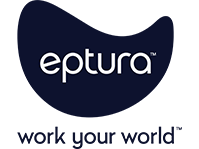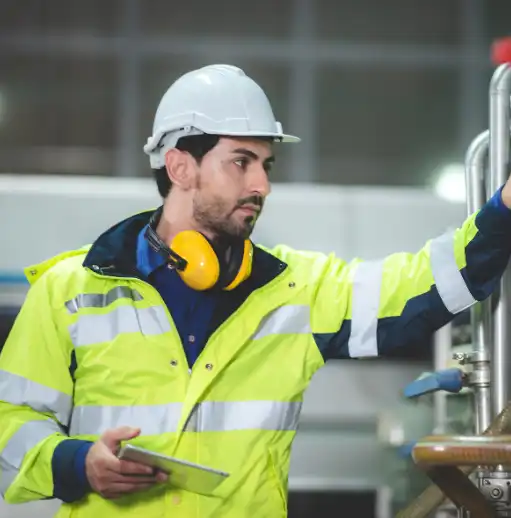
As the world of work rapidly changes, enterprises face new operational challenges, such as rising return-to-office trends to shifting workforce demographics. Over the next 12 months, 34% of companies are expecting to increase the number of days in the office, according to Eptura’s 2025 Workplace Index report, putting focus on facility managers to balance experience and efficiency. By 2030, Gen Z will represent 22% of the workforce, a demographic shift that is driving demand for digitally native office experiences.
In our April 2025 product announcement, we highlighted updates that are helping enterprises meet these challenges through increased maintenance technician productivity, improved employee experience, stronger support for hybrid work, and automated workplace operations backed by AI.
Defining the world of work
The 2025 Workplace Index report revealed the key challenges enterprises face managing their business operations, including the need to:
- Integrate workplace and building technologies
- Optimize real estate portfolios
- Enhance employee productivity
- Improve occupancy across the working week
- Increase asset lifecycles
- Manage inconsistent data
To overcome these obstacles, companies are focusing on different goals across business functions. For employee experience, they want to align on a unified vision across all functions. For buildings and facilities, the goal is integration of employee, workplace and asset solutions, while the target for asset management is to centralize asset maintenance.
Looking at these objectives together, it’s clear organizations need automation and integration from integrated use cases, cross-platform data analytics, and embedded AI.
“Enterprises are under pressure to manage rising office occupancy, deliver frictionless experiences, and make smarter decisions about their spaces and assets,” said Eptura Chief Executive Officer Brandon Holden. “Our latest updates address these needs directly — with mobile tools for field teams, AI-enabled employee and visitor management solutions, and real-time workplace analytics that help organizations operate more efficiently and securely.”
New ways for asset teams to leverage data on and offline
A key finding from the 2025 Workplace Index report is a quantitative value for implementing preventive maintenance: reactive, on-demand work orders require nearly twice as many full-time employee hours as preventive ones.
Implementing a PM program offers a strong return on investment, but departments must first take several steps, including:
- Standardizing procedures
- Maintaining accurate records
- Controlling inventory
Without reliable systems to capture, generate, and share data on best practices, work orders, and parts and materials, organizations struggle to implement proactive maintenance programs.
Supporting maintenance teams with Intelligent mobile tools
By creating clear communication channels and access to critical data out in the field — both with and without Wi-Fi or cell service — our new features for maintenance will increase technician efficiency while ensuring the department has reliable data it can leverage into actionable insights.
Our mobile app for asset management will deliver a comprehensive, user-friendly experience for maintenance techs. They’ll be able to access and update their assigned work orders, asset data like location and repair and maintenance histories, and inventory, even when offline. Once they’re back in range, the app automatically syncs any updates. By enabling real-time data input, technicians don’t have to rely on memory, which ensures more reliable data capturing.
Another feature that improves data capture for mobile is voice-enabled assistance that supports hands-free task execution to streamline service delivery while eliminating the need for manual data entry.
Prepacking associated parts and materials with inventory kitting
One of the many advantages to preventive maintenance is how technicians already know what inventory they will need to close out the proactive work order. So, if they’re assigned maintenance on a pump, they arrive on site with the associated gauges, tools, seals, and sealant.
Our new features will include parts kitting, where the maintenance department packages the parts and materials associated with specific maintenance or repair tasks, making it easier for technicians to collect everything they need before heading to the assigned job site.
Centralizing data through Autodesk Tandem Connect integration
The upcoming integration will automatically configure all asset data in Archibus, so departments can manage maintenance more efficiently. With real-time data sync and workflow automation between digital twins and asset systems, facility and maintenance leaders will have more visibility and control.
The use case: The maintenance lead at a large manufacturing facility sees a large percentage of the on-demand work orders are related to the HVAC systems. So, she sets up an automated schedule of inspections and tasks, and when the software generates new work orders, the lead assigns them to her team. By tracking completed work orders, she will be able to more accurately forecast inventory usage rates.
Improved experiences for employees and visitors, with insights for workplace leaders
Many companies project more in-office days for their employees over the next 12 months, creating pressure on facility and workplace leaders to deliver a strong employee experience. But the rise in visitor numbers has already arrived. According to the report, visitor numbers per location have almost doubled across all regions over the last three years, a surge that the report notes “precipitating a need to automate via AI.”
Setting up visitor management that’s seamless, touchless, and secure
Even before they arrive, our new features will help companies create a more personalized experience, with customizable visitor invitation enhancements. On site, facial recognition check-in delivers a check-in experience that is seamless, secure, and touchless.
One of the challenges for enterprises with multi-facility real estate portfolios is piloting programs and then scaling those successes. Our global admin dashboard for visitor management will deliver oversight across multiple locations. Region-specific settings and audit controls help companies best meet the local needs and expectations of visitors.
Often, these are directly related to security. For example, the global head of security will be able to use the dashboard to pilot visitor processes at a single location before rolling them out across the portfolio. They will also be able to adjust visitor privacy controls to better protect identities and meeting details.
Enhancing employee productivity by automating workspace booking
According to the Index report, “for buildings and facilities managers, visitor management along with employee experience are key areas to implement AI in the next 12 months.”
The most popular responses to the question, “What areas of your buildings and facilities operations do you plan to implement AI in the next 12 months?” were:
- Employee experience (77%)
- Visitor management (68%)
- Space utilization (59%)
Our new features can help them reach this goal. For example, a conversational AI assistant integration with Microsoft Teams will help employees book rooms, manage visitors, and plan workdays using natural language. Instead of typing and clicking, they can speak to the AI as if it were their personal assistant.
Other return-to-office features will support workplace leaders with automated attendance tracking, configurable team policies, and detailed analytics. The first step to knowing how best to rightsize and configure spaces is having reliable data on how employees are using it. Our features will help leaders capture data and then leverage it into actionable insights that improve employee satisfaction and productivity while controlling operational costs.
Striking the right balance between people and spaces
Growing trends in the built environment space are putting more pressure on facility and workplace leaders to level occupancy across the working week, enhance employee productivity, while also extending asset lifecycles.
“We know many of you are looking to create a seamless employee experience, adapt to changing workplace needs and maximize your real estate ROI. Often that involves trying to find the optimal balance between employee experience and space utilization,” said Eptura Vice President of Product Kev Jones.
Finding that balance shouldn’t mean having to compromise. With intelligent features connected on a unified platform, Jones explained, “our products can really help you manage your workspace, while at the same time delivering an amazing employee experience.”








